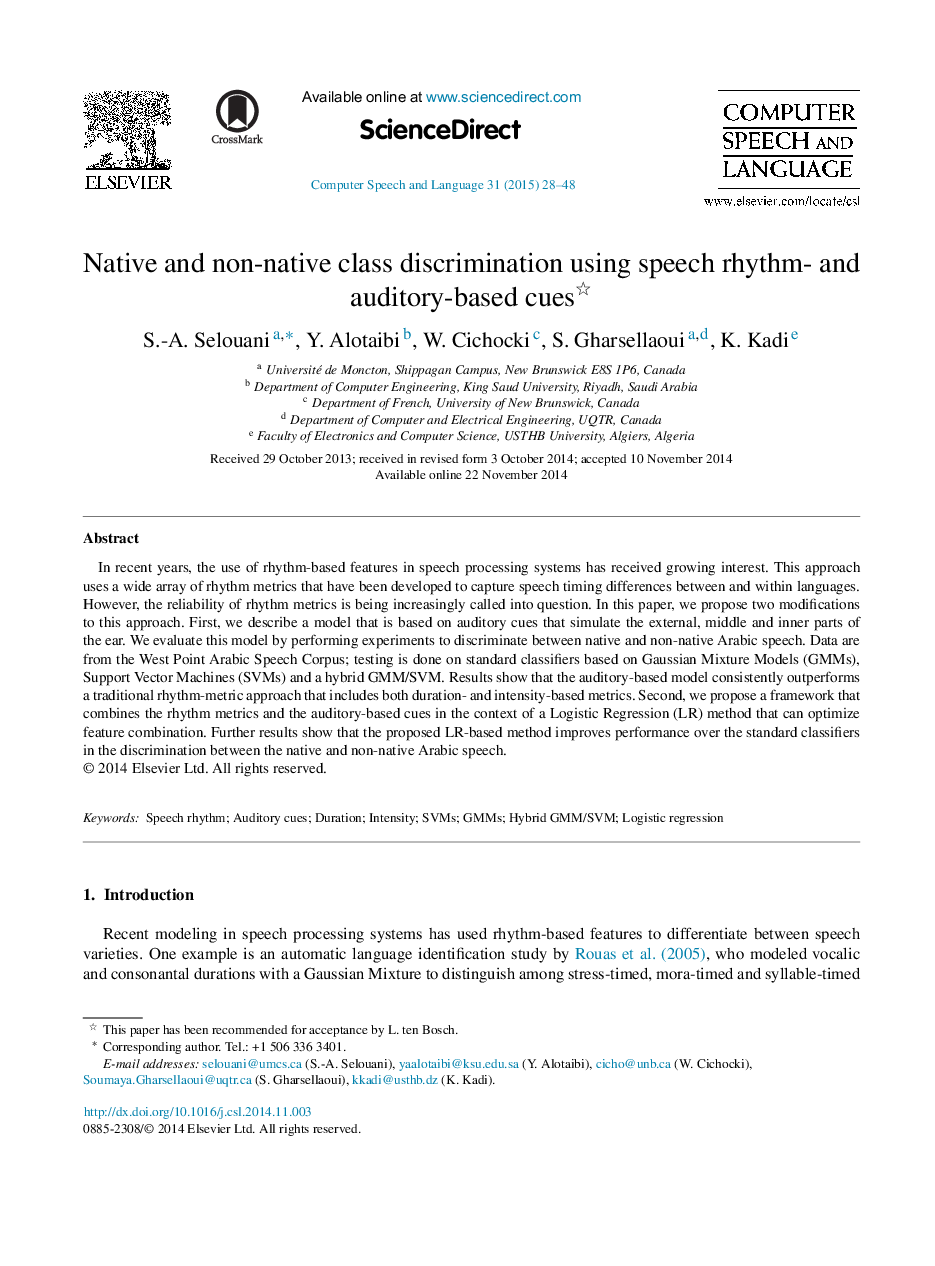| کد مقاله | کد نشریه | سال انتشار | مقاله انگلیسی | نسخه تمام متن |
|---|---|---|---|---|
| 10368482 | 874786 | 2015 | 21 صفحه PDF | دانلود رایگان |
عنوان انگلیسی مقاله ISI
Native and non-native class discrimination using speech rhythm- and auditory-based cues
ترجمه فارسی عنوان
تبعیض نژادی بومی و غیر بومی با استفاده از نشانه های ریتم و شنوایی بیان
دانلود مقاله + سفارش ترجمه
دانلود مقاله ISI انگلیسی
رایگان برای ایرانیان
کلمات کلیدی
موضوعات مرتبط
مهندسی و علوم پایه
مهندسی کامپیوتر
پردازش سیگنال
چکیده انگلیسی
In recent years, the use of rhythm-based features in speech processing systems has received growing interest. This approach uses a wide array of rhythm metrics that have been developed to capture speech timing differences between and within languages. However, the reliability of rhythm metrics is being increasingly called into question. In this paper, we propose two modifications to this approach. First, we describe a model that is based on auditory cues that simulate the external, middle and inner parts of the ear. We evaluate this model by performing experiments to discriminate between native and non-native Arabic speech. Data are from the West Point Arabic Speech Corpus; testing is done on standard classifiers based on Gaussian Mixture Models (GMMs), Support Vector Machines (SVMs) and a hybrid GMM/SVM. Results show that the auditory-based model consistently outperforms a traditional rhythm-metric approach that includes both duration- and intensity-based metrics. Second, we propose a framework that combines the rhythm metrics and the auditory-based cues in the context of a Logistic Regression (LR) method that can optimize feature combination. Further results show that the proposed LR-based method improves performance over the standard classifiers in the discrimination between the native and non-native Arabic speech.
ناشر
Database: Elsevier - ScienceDirect (ساینس دایرکت)
Journal: Computer Speech & Language - Volume 31, Issue 1, May 2015, Pages 28-48
Journal: Computer Speech & Language - Volume 31, Issue 1, May 2015, Pages 28-48
نویسندگان
S.-A. Selouani, Y. Alotaibi, W. Cichocki, S. Gharsellaoui, K. Kadi,
